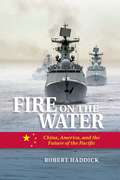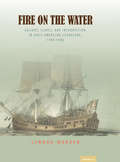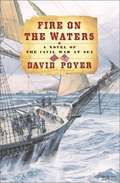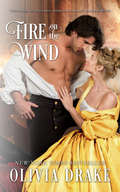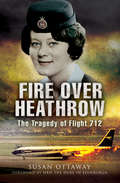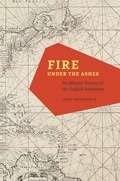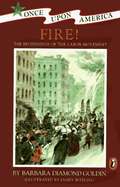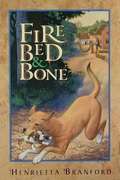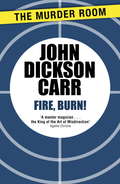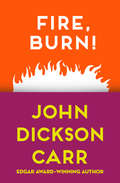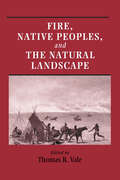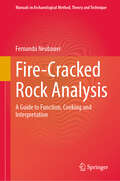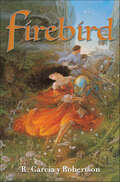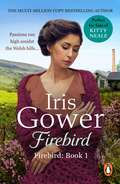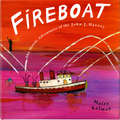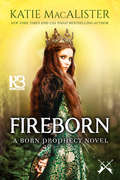- Table View
- List View
Fire on the Water
by Robert HaddickThe main theme of Fire on the Water is that conventional measures of military balance, employed by both the general public and many policy experts, underestimate the threat that China's military modernization poses to the U.S. position in the Asia-Pacific region. Within a decade, China's leaders will have the military power to hold at risk U.S. interest in East Asia. The U.S. needs to fashion a new and competitive strategy, one that better matches the strengths of the U.S. and its allies against China's vulnerabilities, in order to maintain a balance of power in the region and convince China's leaders to pursue a cooperative course.It is not obvious to many observers why a conflict in the region is plausible, or why the U.S. should bear the responsibility for maintaining a forward military presence in the region. China has rapidly emerged as a great power and by doing so, has acquired many vital interests around the world. Following the pattern set by other such episodes in history, China is also acquiring the military means to protect its new interests, a development that puts at risk the interests of China's neighbors and the United States. The U.S. forward military presence in the region is an increasingly difficult burden to sustain. But in the long run, this approach will be less costly and less risky than encouraging China's neighbors to balance China by themselves, an alternative that will very likely result in an unstable arms race and a conflict that will damage America's interests.While it will be in America's interest to maintain its position in the Asia-Pacific region, China's military modernization is making it much more difficult for the U.S. to do so. China's military strategy, centered on its rapidly-expanding land-based and anti-ship missile forces, is exploiting weaknesses in long-standing U.S. force structure and doctrine. Due to a variety of institutional barriers, the U.S. has been slow to adapt to China's military modernization. Current efforts to respond are impractical, in that they expend U.S. resources against China's strengths rather than its vulnerabilities. The U.S. needs a new and competitive strategy that will strengthen its alliances in the region and convince China's leaders that cooperation, rather than military expansion and an attempt at regional hegemony, will be China's best course. Fire on the Water proposes reforms to U.S. diplomacy, military programs, and strategy that will offer a better chance at preserving stability. The goal of these reforms is to thwart China's well-designed military modernization plan, bolster the confidence and credibility of U.S. alliances in the region, and thus persuade China's leaders that China's best course is cooperation rather than conflict, the outcome that has usually occurred in history when a new great power has rapidly emerged.
Fire on the Water: Sailors, Slaves, and Insurrection in Early American Literature, 1789-1886 (Transits: Literature, Thought & Culture 1650-1850)
by Lenora WarrenLenora Warren tells a new story about the troubled history of abolition and slave violence by examining representations of shipboard mutiny and insurrection in late eighteenth- and early nineteenth-century Anglo-American and American literature. Fire on the Water centers on five black sailors, whose experiences of slavery and insurrection either inspired or found resonance within fiction: Olaudah Equiano, Denmark Vesey, Joseph Cinqué, Madison Washington, and Washington Goode. These stories of sailors, both real and fictional, reveal how the history of mutiny and insurrection is both shaped by, and resistant to, the prevailing abolitionist rhetoric surrounding the efficacy of armed rebellion as a response to slavery. Pairing well-known texts with lesser-known figures (Billy Budd and Washington Goode) and well-known figures with lesser-known texts (Denmark Vesey and the work of John Howison), this book reveals the richness of literary engagement with the politics of slave violence. Published by Bucknell University Press. Distributed worldwide by Rutgers University Press.
Fire on the Waters (The Civil War at Sea #1)
by David PoyerThe year is 1861, and America shudders on the brink of disunion. Elisha Eaker, scion of a wealthy Manhattan banking family, joins the Navy against his father's wishes. He does it as much to avoid an arranged marriage to his cousin, Araminta Van Velsor, as to defend the flag. As war looms, Eli boards the sloop of war U.S.S. Owanee. There he meets Lieutenant Ker Claiborne at his own moment of decision. Claiborne, Owanee's executive officer, is an Annapolis graduate who's seen action in the West Indies and the Africa Station on the Navy's Anti-Slavery Patrol. Cool and competent in storm and battle, he now faces an agonizing choice between the Navy he loves and his native Virginia. Whichever road he takes, he'll be called a traitor. Within days, Owanee is ordered on a desperate mission to relieve Fort Sumter, the last outpost of Union authority in the newly declared Confederacy. And in Manhattan, Araminta makes her own move for independence. So begins Fire on the Waters, a tale of honor, loyalty, and the hunger for freedom. With authentic nautical and historical detail, veteran storyteller David Poyer follows Eli, Araminta, Ker, and their loved ones and shipmates into a maelstrom of divided loyalties, bitter partings, stormy seas, governmental panic, political blundering, and finally the test of battle as the bloodiest and most divisive war in American history begins.
Fire on the Wind (Fire Duology #1)
by Olivia DrakeNew York Times and USA Today bestselling historical romance novelist Olivia Drake brings us a tale of adventure, intrigue, and true love… A wave of chaos sweeps over British-ruled India, where headstrong Sarah Faulkner is bound both by her gender and the confines of her uncle’s military compound. Unwilling to sit on the sidelines, the free-spirited beauty breaks free only to discover that her sheltered life hasn’t prepared her for the real world.Fleeing the impeding chaos, Sarah meets mysterious and alluring Damien Coleridge, the disgraced son of an English duke—banished from England to atone for a crime he didn’t commit. Seeking his own sanctuary, Damien is drawn to Sarah, and the walls he’s built up over the years of solitude crumble at her touch…Threatened by both war and their own wild nature, the two must find a way to keep each other, and their passion, safe…"An exhilarating, exotic, and adventurous love story. Again and again, Olivia Drake stretches the boundaries of the genre...Fire on the Wind is her most powerful romance yet." —Romantic Times, exceptional rating"Superlative…definitely a fabulous treasure." —Rendezvous"Five stars!" —Affaire de Coeur
Fire over Heathrow: The Tragedy of Flight 712
by Susan OttawayAn in-depth account of the 1968 London air tragedy that claimed five lives—includes interviews with cabin crew, passengers, and air traffic controllers. One and a half minutes after takeoff on the clear and sunny afternoon of April 8, 1968, the Number 2 engine of BOAC Boeing 707 G-ARWE broke away from its mounting pylon and fell, tumbling in flames. Captain Cliff Taylor managed an extremely smooth touchdown about 400 yards beyond the Heathrow runway threshold and the aircraft came to a stop 1,400 yards further along the runway. The cabin crew had the doors open and passengers began escaping from the starboard over-wing exit and then via chutes at the forward and rear galley doors. Several explosions occurred and the port wing fell off, the resulting blast hurling flaming debris over the side of the aircraft. The rear escape chute was damaged by the fire and burst but, of the 126 people aboard, most of the 121 survivors had escaped before the arrival of the main fire and rescue services. Thirty-eight people received treatment for injuries and five, including stewardess Barbara Jane Harrison, were overcome by heat and fumes and died aboard G-ARWE. For her bravery in trying to rescue the remaining passengers on that day, Harrison was awarded the George Cross. &“An amazing story . . . a fitting tribute to Jane and the other unfortunate people who lost their lives. It is extremely well written and I would highly recommend it.&” —Jonathan Wright
Fire over Heathrow: The Tragedy of Flight 712
by Susan OttawayAn in-depth account of the 1968 London air tragedy that claimed five lives—includes interviews with cabin crew, passengers, and air traffic controllers. One and a half minutes after takeoff on the clear and sunny afternoon of April 8, 1968, the Number 2 engine of BOAC Boeing 707 G-ARWE broke away from its mounting pylon and fell, tumbling in flames. Captain Cliff Taylor managed an extremely smooth touchdown about 400 yards beyond the Heathrow runway threshold and the aircraft came to a stop 1,400 yards further along the runway. The cabin crew had the doors open and passengers began escaping from the starboard over-wing exit and then via chutes at the forward and rear galley doors. Several explosions occurred and the port wing fell off, the resulting blast hurling flaming debris over the side of the aircraft. The rear escape chute was damaged by the fire and burst but, of the 126 people aboard, most of the 121 survivors had escaped before the arrival of the main fire and rescue services. Thirty-eight people received treatment for injuries and five, including stewardess Barbara Jane Harrison, were overcome by heat and fumes and died aboard G-ARWE. For her bravery in trying to rescue the remaining passengers on that day, Harrison was awarded the George Cross. &“An amazing story . . . a fitting tribute to Jane and the other unfortunate people who lost their lives. It is extremely well written and I would highly recommend it.&” —Jonathan Wright
Fire under the Ashes: An Atlantic History of the English Revolution
by John DonoghueIn Fire under the Ashes, John Donoghue recovers the lasting significance of the radical ideas of the English Revolution, exploring their wider Atlantic history through a case study of Coleman Street Ward, London. Located in the crowded center of seventeenth-century London, Coleman Street Ward was a hotbed of political, social, and religious unrest. There among diverse and contentious groups of puritans a tumultuous republican underground evolved as the political means to a more perfect Protestant Reformation. But while Coleman Street has long been recognized as a crucial location of the English Revolution, its importance to events across the Atlantic has yet to be explored. Prominent merchant revolutionaries from Coleman Street led England’s imperial expansion by investing deeply in the slave trade and projects of colonial conquest. Opposing them were other Coleman Street puritans, who having crossed and re-crossed the ocean as colonists and revolutionaries, circulated new ideas about the liberty of body and soul that they defined against England’s emergent, political economy of empire. These transatlantic radicals promoted social justice as the cornerstone of a republican liberty opposed to both political tyranny and economic slavery—and their efforts, Donoghue argues, provided the ideological foundations for the abolitionist movement that swept the Atlantic more than a century later.
Fire! Fire!
by Gail GibbonsThe alarm sounds. Fire! Fire! Big trucks roll out of the fire house and race to the scene. Out come the soft hoses and aerial ladders. Whether the fire is in the city or in the country, on the waterfront or in a deep forest, firefighters are on the scene in moments, ready to attack the blaze. <P><P>[This text is listed as an example that meets Common Core Standards in English language arts for K-1 at http://www.corestandards.org.]
Fire! The Beginnings of the Labor Movement
by Barbara Diamond GoldinIn 1911 Rosie becomes involved in the struggle for better working conditions m factories when fire rips through the Triangle Shirtwaist factory, where her older sister Freyda is employed.
Fire! The Triangle Shirtwaist Factory Tragedy
by Tracey WestThis is a children's book about a factory fire in 1911 in New York City. The reader learns about the fire and how laws were changed because of it.
Fire!: My Parents' Story
by Jessie Haas"Don't be afraid. The house is afire." It's spring in Vermont, in 1948. A fire has started in an isolated farmhouse, and eight-year-old Patty is the first to discover it. Help is slow to come.<P> Patty and her family must save themselves, and save their animals. Jessie Haas's family history is as rich and powerful as any work of fiction, and she tells it with suspense and sensitivity. "Fire!" is the story of her parents' struggle and survival, and of life in Vermont fifty years ago.
Fire, Bed, and Bone
by Henrietta BranfordHenrietta Branford's gripping novel depicts the tumult and tragedy of the Peasants' Revolt in England through the eyes, ears, and nose of a dog. "I am not, nor ever will be, truly wild. Because I have known fire, bed, and bone. Because I am a hunting dog, a dog who must work with a man." So says the old hunting dog who narrates this unforgettable tale. Living with poor but kindly Rufus and Comfort and their children, she has all a dog could ask for--fire, bed, and bone. But this is 1381 and unrest is spreading like a plague among the peasants of England, who are tired of the hardship and injustice they suffer at the hands of oppressive landlords. Rebellion is in the air, and life for man--and dog--is about to change forever...
Fire, Burn!
by John Dickson CarrOne October night in the middle of the twentieth century Detective Inspector John Cheviot got into a taxi, bound for New Scotland Yard. When he stepped out it was from a horse-drawn cab, the year was 1829, and a beautiful woman was beckoning him in front of Old Scotland Yard. There were things Cheviot remembered but couldn't use - like how to analyse fingerprints; and things he didn't know that he could have used - like how advanced his romance with Lady Flora really was. And there wasn't even time to learn, because in the midst of helping Robert Peel establish the respectability and competence of his new police force, Cheviot suddenly finds himself and his lady accused of cruel murder.
Fire, Burn! (Murder Room #234)
by John Dickson CarrOne October night in the middle of the twentieth century Detective Inspector John Cheviot got into a taxi, bound for New Scotland Yard. When he stepped out it was from a horse-drawn cab, the year was 1829, and a beautiful woman was beckoning him in front of Old Scotland Yard. There were things Cheviot remembered but couldn't use - like how to analyse fingerprints; and things he didn't know that he could have used - like how advanced his romance with Lady Flora really was. And there wasn't even time to learn, because in the midst of helping Robert Peel establish the respectability and competence of his new police force, Cheviot suddenly finds himself and his lady accused of cruel murder.
Fire, Burn! (Murder Room Ser.)
by John Dickson CarrHurled back in time, a London police detective struggles to solve a nineteenth-century murder mystery in Golden Age master John Dickson Carr&’s thrilling mystery novelA woman is killed in a well-lit corridor, dying before the eyes of three witnesses who, impossibly, detect no foul play. For more than a century, this baffling murder lies cold in the files of Scotland Yard until it is discovered by Detective-Superintendent John Cheviot, who yearns to apply modern scientific policing to the grisly old case. He is about to get his chance.Taking a cab to Scotland Yard, Cheviot steps out in front of Old Scotland Yard and sees a beautiful woman beckoning him. Suddenly it is 1829 and Cheviot is a member of the newly organized London police force. He might now have an opportunity to solve the most puzzling murder in the Yard&’s history, but in a time before fingerprints and ballistic analysis, he will find police work to be far more baffling and brutal than he is used to.
Fire, Native Peoples, and the Natural Landscape
by Thomas ValeFor nearly two centuries, the creation myth for the United States imagined European settlers arriving on the shores of a vast, uncharted wilderness. Over the last two decades, however, a contrary vision has emerged, one which sees the country's roots not in a state of "pristine" nature but rather in a "human-modified landscape" over which native peoples exerted vast control.Fire, Native Peoples, and the Natural Landscape seeks a middle ground between those conflicting paradigms, offering a critical, research-based assessment of the role of Native Americans in modifying the landscapes of pre-European America. Contributors focus on the western United States and look at the question of fire regimes, the single human impact which could have altered the environment at a broad, landscape scale, and which could have been important in almost any part of the West. Each of the seven chapters is written by a different author about a different subregion of the West, evaluating the question of whether the fire regimes extant at the time of European contact were the product of natural factors or whether ignitions by Native Americans fundamentally changed those regimes.An introductory essay offers context for the regional chapters, and a concluding section compares results from the various regions and highlights patterns both common to the West as a whole and distinctive for various parts of the western states. The final section also relates the findings to policy questions concerning the management of natural areas, particularly on federal lands, and of the "naturalness" of the pre-European western landscape.
Fire-Cracked Rock Analysis: A Guide to Function, Cooking and Interpretation (Manuals in Archaeological Method, Theory and Technique)
by Fernanda NeubauerThis volume is the first manual book to address fire-cracked rock (FCR) or fire-affected rock analysis, thus filling a significant gap in the market and in the existing literature. This book develops a method and theory for how FCR was used, to familiarize readers with a new approach to FCR analysis. The book provides a history and background of fire-cracked rock and leads the reader through the entire process of identifying, categorizing, and analyzing FCR and related features, from the first steps through to interpretations of function, use-alteration, fracturing patterns, experimentation, ethnographic/ethnohistoric uses, and so forth. In addition to exploring the fundamentals of FCR analysis, the book will also cover new and cutting-edge techniques. This manual is designed to walk archaeologists from step one of FCR analysis to final advanced interpretations of use. It is meant to serve as a laboratory and field guide for students and professionals, containing illustrations, photographs, and case studies in order to familiarize readers with the identification and analysis process while also providing a theoretical and methodological guide for advance academic and cultural resource management research. Thus, this book is meant to target a wide global audience and spatiotemporal range, spanning hundreds of millennia of the human experience, from paleoanthropology and the early adoption of fire through to the present. Where FCR was once simply quantified according to weight and size, this book will transform it into a significant diagnostic artifact in the study of ancient foodways and domestic life. At sites where organic preservation is poor to non-existent, and the quotidian sphere is obscure, the use of FCR to determine cooking methods and everyday life will come as a breakthrough. This will be a pioneering manual for the study of FCR, focusing on the ways practicing archaeologists can infer function from their FCR collections.
Fire-Power: The British Army Weapons & Theories of War 1904–1945 (Pen & Sword Military Classics #Vol. 44)
by Shelford Bidwell Dominick GrahamThe great siege of Gibraltar was the longest recorded in the annals of the British army. Between 1779 and 1783 a small British force defended the Rock against the Spanish and the French who were determined take this strategically vital point guarding the entrance to the Mediterranean. The tenacity and endurance shown by the attackers and defenders alike, and the sheer ingenuity of the siege operations mounted by both sides, make the episode an epic of military history, and the story gives us a fascinating insight into the realities of siege warfare. In this, the first full study of the siege for over 40 years, James Falkner draws on a wide range of contemporary sources to tell the exciting tale of a huge and complex operation.
Firearms in Colonial America: The Impact on History and Technology 1492-1792
by M. L. BrownThis is a book about firearms. It is also a book about people and technology, for the dramatic role of the firearm as an efficient, effective tool which evolved during humankind's continuing struggle for survival cannot be minimized in any history of civilization. This book is fundamentally concerned with the Old World firearms evolution as it relates to the influence of firearms in colonial America during the period 1492 to 1792; a complex sphere of influence spanning three centuries, and intricately woven into the colorful and diverse fabric of our distinctive national heritage.
Firearms, Traps, and Tools of the Mountain Men: A Guide to the Equipment of the Trappers and Fur Traders Who Opened the Old West
by Carl P. RussellThis classic, scholarly history of the fur trappers and traders of the early nineteenth century focuses on the devices that enabled the opening of the untracked American west. Sprinkled with interesting facts and old western lore, this guide to traps and tools is also a lively history. The era of the mountain man is distinct in American history, and Russell's exhaustive coverage on the guns, traps, knives, axes, and other iron tools of this era, along with meticulous appendices, is astonishing. The result of thirty-five years of painstaking research, this is the definitive guide to the tools of the mountain men.
Firebird
by R. Garcia y RobertsonIn the fantastic land of Markovy east of Europe, in the Iron Wood filled with werewolves and other unpleasant creatures, in the house of the dreaded Bone Witch, lives a young orphan girl named Aria. Her life is changed forever when a foreign knight, Sir Roye de Roye, enters the forest pursued by enemies, carrying with him the most precious artifact of the kingdom, the egg of the Firebird. Aria saves him and falls in love with him, and it becomes her mission in life to restore the egg to the firebird's nest. And so she and her knight set out on a wonderful quest, filled with spectacle, romance, and hairs-breadth escapes, to save the land and find a life together.At the Publisher's request, this title is being sold without Digital Rights Management Software (DRM) applied.
Firebird: (Firebird:1) An enthralling, heart-wrenching and moving saga set amongst the Welsh hills
by Iris GowerA sensational story of tragedy, riches, poverty and love from bestselling author Iris Gower. If you like Dilly Court and Rosie Goodwin, you will love this..! READERS ARE LOVING FIREBIRD!"Her characters come to life and feel as if they're [your] neighbours..." - 5 STARS"Can't put it down..." - 5 STARS"Excellent" - 5 STARS"Brilliant" - 5 STARS*********************************************************************PASSIONS RUN HIGH AMIDST THE WELSH HILLS...When Llinos Savage's mother dies an untimely death, she finds herself in charge of the family pottery while still a young girl, attempting to keep the business afloat and dealing with the plotting of Philip Morton Edwards, the powerful and rich owner of the rival pottery in Swansea. Her father's return, badly wounded, from fighting Napoleon in France should be a joyous reunion, but instead his presence only adds to her difficulties.Two men make her world even more complicated: Eynon Morton Edwards, Philip's son - a gentle and sympathetic figure yet despised by his father; and Joe, an exotic outsider, born of an unlikely union between a cultured English businessman and a Native American squaw.How will Llinos cope with running the pottery, while suffering from the hatred of the Morton Edwards family and battling to suppress her own feelings for the man who seems her most unlikely suitor? Firebird is the first novel in Iris Gower's Firebird series. The saga continues in Dream Catcher.
Firebird: A Novel
by Mercedes LackeyIn Mercedes Lackey's Firebird, Ilya, son of a Russian prince, is largely ignored by his father and tormented by his larger, older brothers. His only friends are three old people: a priest, a magician, and a woman who toils in the palace dairy. From them Ilya learns faith, a smattering of magic, and the power of love--all of which he will need desperately, for his life is about to be turned upside-down.The prince's magnificent cherry orchard is visited at midnight by the legendary Firebird, whose wings are made of flame. Ilya's brothers' attempts to capture the magical creature fail. When Ilya tries to catch the Firebird, he sees her as a beautiful woman and earns a magical gift: the speech of animals. Banished, the young man journeys through a fantastical Russia full of magical mazes, enchanted creatures, and untold dangers. As happens in the best fairy tales, Ilya falls in love with an enchanted princess, but to win her freedom will be no easy task.At the Publisher's request, this title is being sold without Digital Rights Management Software (DRM) applied.
Fireboat: The Heroic Adventures of the John J. Harvey
by Maira KalmanThe Snicker candy bar appeared, and Babe Ruth hit his 611th home run. <P><P>That was also the year the John J. Harvey fireboat was first launched. It had levers, buttons, buckets, brass trim, and five engines, and it fought fires on the piers. But by 1995, the city had little use for a fireboat, and it sold the Harvey to group of people who restored and used it for fun. <P><P>Then came 9/11, "something so huge and horrible happened that the whole world shook." The Harvey was called back into service. Firefighters attached their hoses to the boat and fought fires for four days and nights. <P><P>Kalman does some extraordinary things in this beautiful picture book. She takes the fireboat's history and puts it within the context of a city that has endured, framing the enormity of 9/11 so young readers, and even small children, can begin to grasp what happened. At the same time, she makes the event part of life's continuum of loss and endurance.
Fireborn: A Born Prophecy (A Born Prophecy Novel #1)
by Katie MacalisterTWO REALMS AT WAR Thousands of years ago, the twin gods Kiriah and Bellias made a wager as to who could raise the best civilization. Kiriah created the Fireborn, the children of light, who would wield the power of the sun and the blessings of nature. Bellias nurtured the Starborn, the children of the heavens, who would harness the arcane power that rippled across the night sky and flowed through all living things. And so the battle began . . . THREE FATES ENTWINED As the war between the Fireborn and Starborn enters the Fourth Age, three unlikely heroes emerge. Allegria is a young priestess who longs to honor the goddess of the sun with her battle skills rather than her prayers. Hallow is an apprentice without a master, eager to explore his power over the stars. And Deo is the chosen one, a child of both worlds who could be the key to bringing peace across the land—or the ultimate weapon in the war to end all wars . . . ONE PROPHECY FULFILLED The time has come for these three companions to choose sides—and seal their fates—in the thrilling first novel of the epic Born Prophecy saga by bestselling author Katie MacAlister.
